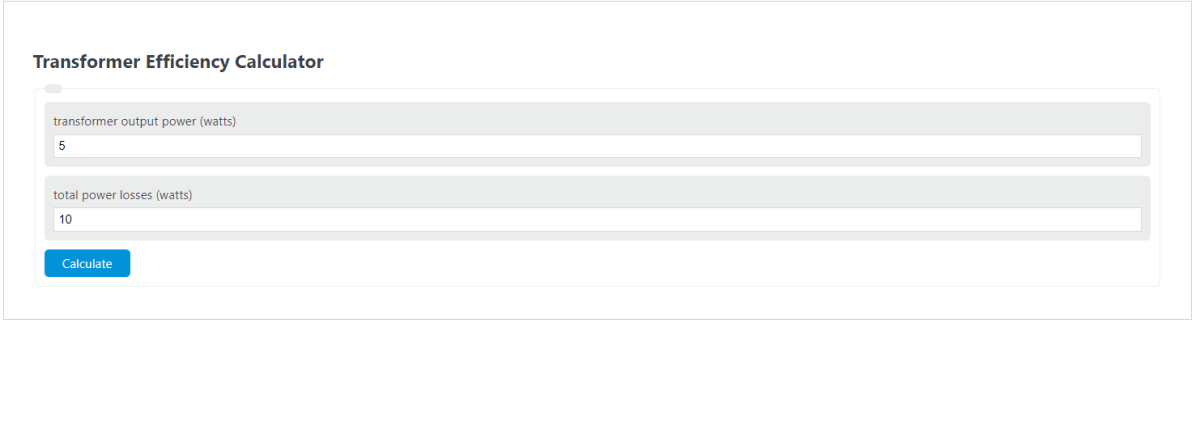Enter the transformer output power (watts) and the total power losses (watts) into the calculator to determine the Transformer Efficiency.
- All Efficiency Calculators
- Transformer Loss Calculator
- CHP Efficiency Calculator
- Solar Panel Efficiency Calculator
- Power Supply Efficiency Calculator
- Linear Regulator Efficiency Calculator
Transformer Efficiency Formula
The following formula is used to calculate the Transformer Efficiency.
Et = Po / (Po + PL) *100
- Where Et is the Transformer Efficiency (%)
- Po is the transformer output power (watts)
- PL is the total power losses (watts)
To calculate the transformer efficiency, divide the output power by the sum of the output power nad the power losses, then multiply by 100.
How to Calculate Transformer Efficiency?
The following two example problems outline how to calculate the Transformer Efficiency.
Example Problem #1:
- First, determine the transformer output power (watts). In this example, the transformer output power (watts) is given as 50.
- Next, determine the total power losses (watts). For this problem, the total power losses (watts) is given as 5.
- Finally, calculate the Transformer Efficiency using the equation above:
Et = Po / (Po + PL) *100
Inserting the values from above and solving the equation:
Et = 50 / (50 + 5) *100 = 90.909 (%)
FAQ
What factors can affect transformer efficiency?
Transformer efficiency can be affected by several factors including the quality of materials used in construction, the design of the transformer, operating temperature, frequency of operation, and load conditions. Higher quality materials and design can reduce power losses, thereby increasing efficiency.
Why is it important to calculate transformer efficiency?
Calculating transformer efficiency is crucial for several reasons. It helps in assessing the performance of a transformer, estimating its operating costs, and determining its environmental impact. High efficiency implies lower energy losses, which translates to cost savings and reduced carbon footprint.
Can transformer efficiency be improved after manufacturing?
While the core design and materials used in a transformer set a limit on its maximum efficiency, certain measures can be taken to improve its operational efficiency. These include maintaining an optimal load, ensuring proper cooling to reduce thermal losses, and regular maintenance to prevent electrical losses due to deteriorated insulation or connections.
